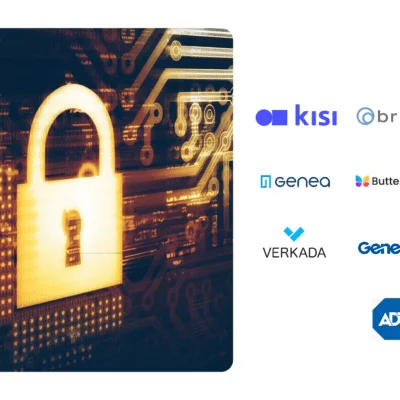1. Introduction to Hybrid Work
The world of work has witnessed a paradigm shift, gravitating towards hybrid models that blend remote and in-office. This change isn’t just about location; it’s a reflection of a deeper transformation in work culture, driven by employee preferences and technological advancements. Today’s workforce desires flexibility, and hybrid models are a response to this increasing demand. These models offer a balanced approach, combining the autonomy of remote work with the collaborative benefits of traditional office environments. As we go into the world of hybrid work, we’ll explore its various forms, the benefits it brings to both employees and employers, and the best practices to make it successful.
2. Benefits of Hybrid Work
Hybrid work models deliver substantial advantages for both employees and employers:
- Enhanced Productivity: By allowing employees to select their work environment based on the nature of their tasks, hybrid work promotes a focused and efficient workflow.
- Work-Life Harmony: Flexibility in work location and schedules empowers employees to achieve a healthier balance between their professional and personal lives.
- Cost Efficiency for Organizations: Businesses can reap financial benefits by downsizing physical office spaces and reducing overhead costs.
- Environmental Sustainability: Reduced commuting translates to lower carbon footprints, contributing to corporate sustainability efforts.
- Employee Satisfaction and Loyalty: The autonomy and flexibility inherent in hybrid models can significantly boost job satisfaction, leading to improved retention rates.
3. Best Practices for Implementing Hybrid Work
To successfully adopt a hybrid work model, companies should:
- Ensure Clear and Proactive Communication: Establishing transparent communication channels is crucial for keeping both remote and in-office teams aligned and informed.
- Digital Collaboration Tools: Incorporate technologies such as Slack, Zoom, and Asana to facilitate easy collaboration and project management across different work environments.
- Inclusive Culture: Organize virtual team-building activities and ensure that all employees, regardless of their location, have equal participation in decision-making and access to information.
- Create a Feedback-Driven Approach: Regularly solicit and act upon employee feedback to refine and improve the hybrid work model, ensuring it meets the evolving needs of the workforce.
4. Technology and Tools for Hybrid Work
- Emphasize Proactive Communication: Regularly communicate updates and changes in policies. This helps in maintaining transparency and keeps everyone informed, regardless of their location.
- Integrate Efficient Technology: Make use of collaborative tools like Slack, Zoom, or Microsoft Teams increase communication and project management, ensuring a smooth interaction between remote and in-office teams.
- Encouraging Inclusivity: Create an environment where every employee, whether remote or on-site, feels equally involved and valued. Host virtual social events and team-building activities to maintain engagement and a sense of community.
- Continuous Feedback Loop: Regularly gather feedback from employees to understand their challenges and experiences. Use this input to make informed adjustments to the hybrid work model.
5. Challenges and Solutions in Hybrid Work
Addressing challenges in a hybrid work model involves recognizing and tackling issues like employee isolation, the risk of overwork, and communication barriers. Solutions include:
- Regular Check-ins and Communication: Establish routine check-ins for remote employees to foster inclusion and address potential isolation. Utilize communication platforms to maintain continuous dialogue between in-office and remote teams.
- Mental Health Support: Offer mental health resources, like counseling services or wellness programs, to support employees’ mental well-being.
- Remote Work Training: Provide comprehensive training for employees to adapt effectively to remote working conditions, focusing on time management, digital tools proficiency, and maintaining work-life balance.
- Flexible Work Arrangements: Encourage flexible schedules to prevent overwork and burnout.
- Inclusive Culture: Organize virtual team-building activities and ensure equal access to opportunities and resources for all employees, regardless of their work location.
6. Hybrid Work Culture
To create a positive hybrid work culture, focus on building trust, inclusivity, and collaboration:
- Cultivate Trust: Encourage transparency and open communication. Trust employees to manage their time and tasks effectively, whether they’re working remotely or in the office.
- Promote Inclusivity: Ensure that remote and in-office employees have equal opportunities to contribute and participate in decision-making processes.
- Encourage Collaboration: Use digital tools to facilitate teamwork and make sure everyone, regardless of their location, can collaborate easily.
- Celebrate Achievements: Acknowledge both individual and team successes regularly, using virtual platforms for organization-wide recognition.
- Maintain Team Bonding: Organize virtual social events or activities that help maintain team spirit and connections among all members.
7. Hybrid Work Models and Schedules
In a hybrid work environment, various models can be adopted to suit different organizational goals and team dynamics:
- Fully Flexible Schedules: Employees have complete freedom to choose their work location, whether it’s from home or the office. This model prioritizes autonomy and is ideal for teams that require high flexibility.
- Fixed Remote Days: Certain days are designated for remote work, while others are for in-office collaboration. This approach offers a predictable schedule, balancing remote work benefits with in-office interaction.
- Office-Centric Approaches: This model encourages more in-office presence while allowing for occasional remote work. It’s suitable for roles that benefit from on-site collaboration or access to specific resources.
Each model should be tailored to align with the company’s objectives, work nature, and employee preferences, ensuring a productive and harmonious work environment.
8. Examples of Hybrid Work Models
Incorporating examples from leading companies:
Zoom
Model Overview: Zoom, a leading video conferencing platform, has implemented a hybrid work model requiring employees near an office to be in at least two days a week. This approach reflects an understanding of the post-pandemic season.
Implementation Details:
In-Office Requirement: Employees close to physical offices are expected to be present for a minimum of two days per week. This strategy aims to balance the benefits of remote work with the advantages of in-person collaboration.
Adapting to Customer Needs: This policy also allows Zoom to empathize with its customers’ experiences in hybrid environments, enhancing product development to both remote and in-office work scenarios.
Learn more here: Zoom’s Hybrid Work Plan
Spotify
Model Overview: Spotify’s “Work From Anywhere” program provides employees with two options: ‘Home Mix’ or ‘Office Mix’, reflecting a highly flexible approach.
Flexible Choices:
Home Mix: Employees who opt for this can mostly work remotely.
Office Mix: This option is available for employees who prefer working from the office, with designated desk spaces.
Change of Preference: Allows employees to switch their preferred mode after every 12 months, acknowledging the dynamic nature of personal and professional needs.
Learn more here: Spotify’s Work From Anywhere Policy
HubSpot
Model Overview: Provides three distinct work options: home, flex, and office, offering a spectrum of flexibility to its employees.
Diverse Options:
Home: For employees preferring to work remotely most of the time.
Flex: This hybrid option is based on desk hoteling, accommodating both remote and office work.
Office: Aimed at employees who work primarily from the office, offering a dedicated desk space.
Quarterly Visits: For the most remote option, HubSpot requires employees to visit the office 1-2 times per quarter, ensuring ongoing connection with the workplace culture.
Learn more here: Hybrid At Hubspot
9. Implementing Hybrid Work
- Clear Communication: It’s crucial to communicate policies and expectations clearly to ensure everyone understands how the hybrid model operates in your organization.
- Technology: Use digital tools for smooth collaboration and productivity. This includes utilizing video conferencing, project management software, and collaboration platforms.
- Maintaining Team Cohesion and Culture: Encouraging a strong company culture by organizing virtual team-building activities and ensuring that both remote and in-office employees feel included and valued. This helps maintain team cohesion and supports a positive work environment.
10. Conclusion
Hybrid work models, blending remote and in-office, mark a significant shift in modern workplace practices. Emphasizing flexibility and adaptability. By encouraging such models, organizations can benefit from increased productivity, cost efficiency, and enhanced employee satisfaction. Implementing hybrid work successfully involves clear communication, effective use of technology, and maintaining an inclusive culture. Despite challenges, such as isolation and overwork, appropriate strategies and tools can create a balanced, productive, and satisfying work environment for all.
























